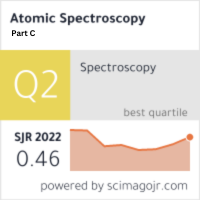Advancements in Passivating Contact and Structure Technology for Efficient, Cost-Effective, and Eco-Friendly Fabrication for c-Si Solar Cell Fabrication: A Comprehensive Review
Keywords:
crystalline silicon solar cell; passivating contact; solar cell structure technology; cost-effective; transition metal oxide (TMO); eco-friendly, carrier selective contact; titanium oxide ; molybdenum oxideAbstract
Global energy consumption has surged due to economic and population growth. Traditional fossil fuels are insufficient to meet daily energy needs and emit greenhouse gases, the main cause of global warming and climate change. Environmental concerns and increased energy demand are driving the adoption of alternative energy sources, particularly solar energy. Solar photovoltaic (PV) technology converts sunlight into electricity. The silicon heterojunction technology (SHJ) used in c-Si solar cells enabled a 26.7% efficiency by incorporating doped a-Si:H carrier selective contacts (CSCs) combined with an interdigitated back contact structure (IBC), which is less than the theoretical maximum limit of 29.43%. Solar cell performance is influenced by various energy losses like optical, recombination, electrical, and thermal. More parasitic absorption losses are caused by the doped a-Si:H, and doping with hazardous materials is costly and emits poisonous fumes. Mono-crystalline PV modules are also expensive. Transition metal oxides (TMOs) are abundant, non-toxic, and cost-effective have a broad range of band patterns, and have the virtue of carrier-selectivity, allowing only electrons or holes to flow through contact, which reduces recombination losses and parasitic absorption. TMOs can be used as an alternative to doped a-Si:H contacts. Advanced TMO passivating contacts, or heterocontacts, have emerged as a new industrially preferred technology that can be deposited by a simplified process at low temperatures with efficiencies exceeding 23.5% and a potential greater than 28.4%. This review discussed the recent research and innovations in passivating contact and advanced structure technology aimed at enhancing the performance and sustainability of c-Si solar cells. It focuses on technologies like silicon heterojunction, passivated emitter and rear cell (P.E.R.C.), interdigitated back contact (I.B.C.), heterojunction back contact (H.B.C.), and especially doping-free TMOs asymmetric heterocontact and their potential as cost-effective and eco-friendly alternatives. Passivating contact and structure technology has the potential to accelerate the transition towards clean, cost-effective, and sustainable energy production, providing a levelized cost of energy for society.



